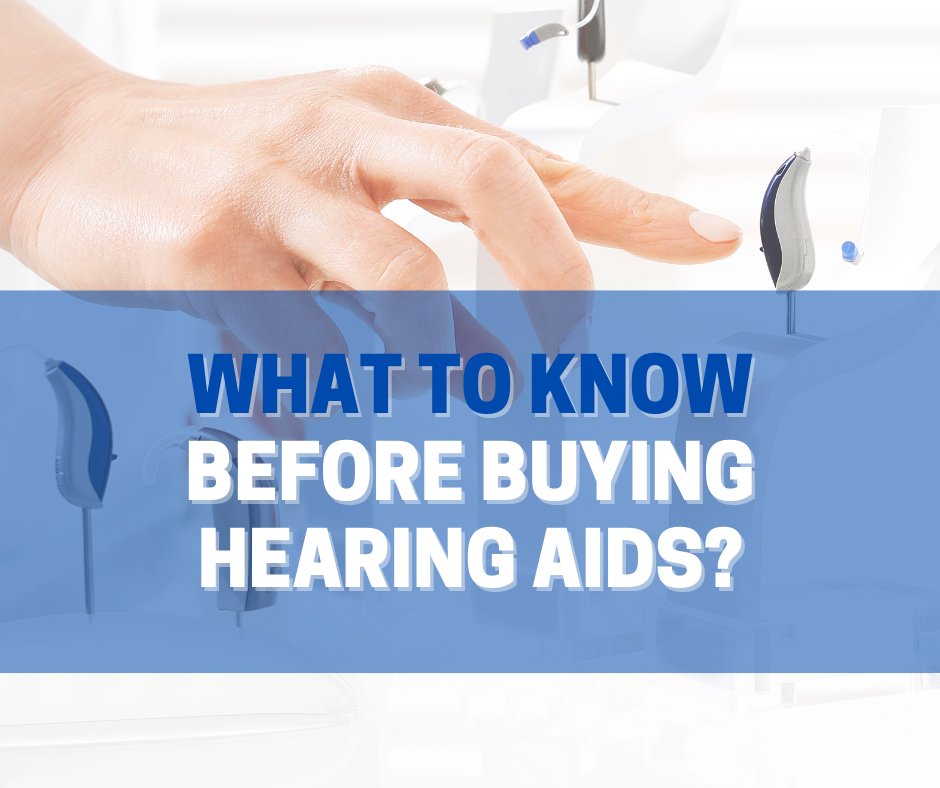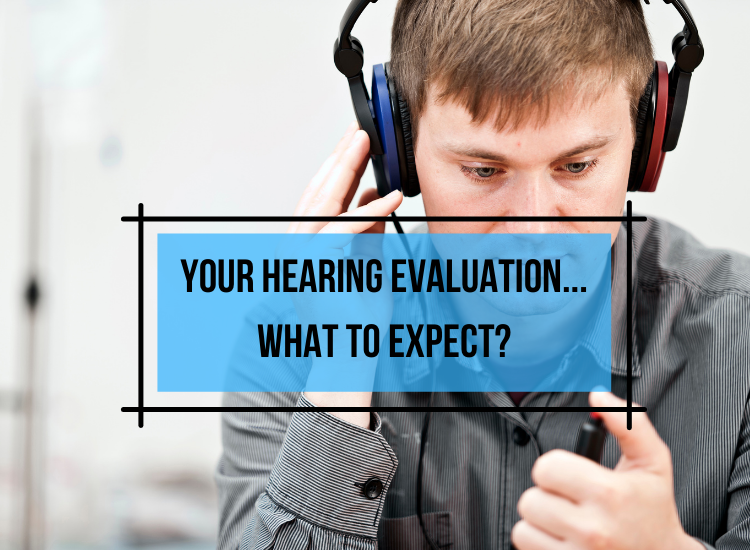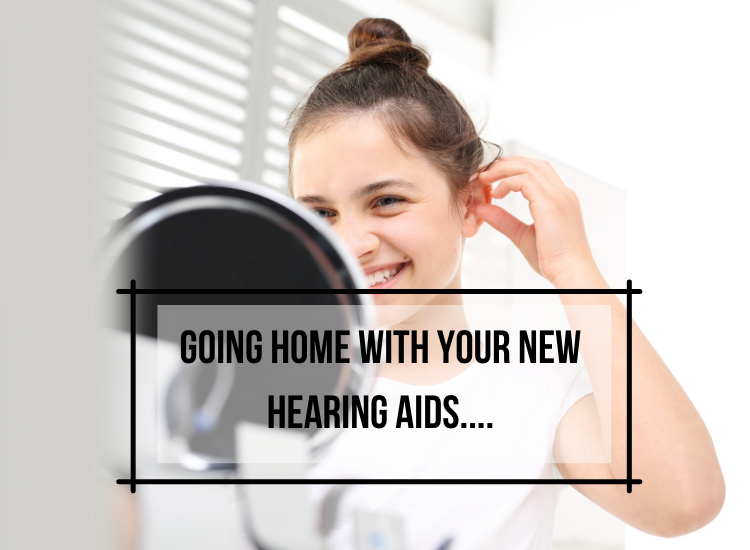
What to know before buying a hearing aid?
January 21, 2021
What to expect from a hearing evaluation?
January 28, 2021So your new hearing aids have been fitted and you are on your way home….
The key to succeeding with hearing instruments is patience, practice and positive thinking. Initially you will hear more sounds – from the ticking of a clock and hum of the refrigerator to the churning of a washing machine. Outside, the traffic will seem louder. In the supermarket it will sound much busier. This can be somewhat overwhelming at first, but this is just a passing phase. Remember that to your brain “normal” hearing is what you have been hearing before you were fitted with your hearing aids. Because of this it tends to focus on all the ‘new’ sound. Your brain needs to learn that hearing all of this sound is in fact normal. This takes some time – but the best way to assist with this is to use the hearing aids for as long as possible every day.
Adapting to your new normal… 
Getting used to hearing instruments can take anywhere from just a few hours, a few days to a few months, depending on your hearing loss, the type of instrument you are wearing, and your ability to adapt. But you will be amazed at how much can be achieved in a short space of time if you are willing to try.
It is important to understand that no matter how advanced your instruments are, they will never be able to completely restore your hearing. Think about it in this way: Even with hearing aids we are still using the damaged auditory system, we are not bypassing the ear entirely.
What you can expect is to hear and understand much more in a wide variety of situations. You will perform better at work or when volunteering; socializing will become more enjoyable, you will feel more confident, and you might even get more energy to enjoy the good things in life.
Your family and friends will certainly notice the difference!
Learning to hear again!
Hearing instruments can make a very positive difference to your life. However, they are not like glasses, which restore your vision the moment you put them on. Initially, certain sounds might seem rather loud – even strange. This is because the brain forgets what it was like to be able to hear those sounds, and it has to learn how to process them again.
You will hear voices and sounds that you may not have heard for a long time. First, your brain has to identify these sounds. Then it has to relearn to focus on the ones that are important and filter out the rest. As you regain the ability to master this task, you will discover that the more you use your instruments, the less you will want to be without them! Train your brain because the brain registers so many new sounds, the initial adjustment period can be quite tiring. It is a bit like training a muscle that has not been used for a long time. What a difference it makes when you regain that lost strength! After wearing your instruments for a couple of weeks, you may need an appointment with your Audiologist for adjustments. Once these have been made you will be able to practice much more and get the very best out of them on a daily basis.
At first, everything may seem louder. This is normal and does not always have to do with the volume being set too high. The best approach is to wear your instruments for as long as possible during the first few days in the quiet of your home, and avoid noisy situations until your brain has had time to adjust. Keep things simple at first, if you have program buttons and volume controls, wait until you are more experienced before experimenting with them. If you are not up to fiddling with them, rely on the fully automatic hearing instrument to keep things comfortable. A little later when you feel ready to try out the various listening programs, you will get even more out of wearing your instruments.
Good tips for a gentle start
- Start by wearing your instruments for most of the day
- Use them in quiet situations, and in one-on-one conversations in your living room
- Listen to the radio or television
- Use them in noisier environments such as a busy road and your local supermarket
- Use the telephone
- Finally, use them with friends or family at home and at your favorite restaurant. This is likely to be the most challenging scenario. At first you may not be able to hear everything that people are saying, but with time this gets easier.
Your initial experiences

Knowing what to expect is the first step to being happy with your instruments. The more severe your hearing loss is, the more likely you are to be overwhelmed by all the new sounds, and their apparent volume. But the more open and natural-sounding your instrument is – for example a RITE (Receiver-in the- Ear) style with an open connection to the ear – the easier you will find the adaptation process. Be prepared for new experiences Things might sound strange at first, but with time you will get used to your new way of hearing.
Here are some examples of what to expect
- Your alarm clock, doorbell or phone ringing might make you jump the first time you hear them
- Flushing your toilet might sound like Victoria Falls
- Hearing yourself chewing will sound strange at first
- Your refrigerator will hum more loudly
- The crinkle of newspaper pages being turned will sound sharper
- Your car will sound different
- You might hear your car’s indicators for the first time in years
- Traffic noise will sound louder
- Birds singing will be louder
- Your own footsteps
- Children laughing
- The sound of stringed instruments
- Rustling of leaves on trees
- Rain against your window
Keep a diary
Adapting to hearing instruments may involve a certain amount of adjustments. This usually happens over a couple of sessions, after you have tried the instruments out in different environments. A great tip is to keep a diary to note down your experiences with your hearing aids. Bring your notes to your next appointment! Take special note of the following aspects:
- Loudness
Listen to sounds in noisy and quiet conditions, soft sounds, like leaves rustling, loud/sudden loud sounds, like a door slamming, children crying or music. Make notes on loudness.
- Changes in your sound environment
Observe typical changes in your sound environment, such as entering a shop from a noisy street or a person addressing you in a crowd. Make notes on how well your instruments adjust to your environment and how comfortable you are with the sound in these environments.
- Sound Quality
Listen to high-pitched sounds (e.g. violins, birdsong, children’s voices) and low pitched sounds (e.g. male voices, bass guitar).
Describe the quality of each sound so that adjustments can be made if necessary.
Follow up
One of the most important steps in your hearing aid journey is to attend your follow-up visits a few weeks after your initial fit.
During these sessions you should share your experiences: The more information you provide, the more your audiologist can ensure that your hearing aids are working best for you! You can bring your notebook along if you made notes; your list of questions is also welcome. You are also very welcome to bring a loved one to help give some feedback on how you did with your hearing aids in the first few weeks.
Fine tuning of hearing aids: With the feedback you provide, the audiologist is enabled to adjust and program your setting according to your needs and feedback. This is inevitable in the process of improving your listening experience!
Typically, there are 2-3 follow up visits required (usually free of charge) to ensure that you are adapting well and that you are well informed on the functionality and handling of the instruments. After this initial process, we recommend that you visit us once a year. The purpose of this visit is for an annual hearing test, annual service of instruments and after the service & test a hearing aid adjustment to make sure that your latest hearing evaluation is stored and programmed into the instruments.
We look forward to taking your hand in this journey!
It is advisable to insure your hearing instruments, you can contact us for an insurance document read more about that here.

Wierdapark – 012 653 3830
Saxby Medicross – 087 944 1803
Benoni – Northmead – 011 425 0171




3 Comments
Thank you. I am enjoying hearing again. I have a problem with my left hearing aid. It has a static noise. If I gentle push the hearing aid towards my head then the noise stops but starts again. I thought the arm of my glasses may be interfering with the hearing aids reception but that doesn’t seem to be the case. What could be causing this? Please help
HI Hilary, thank you for enquiring!
It could be that the fitting of the hearing instrument should be more secure or tight to prevent feedback. If this is not the case there might be a fault on the instrument. I would suggest you see the audiologist t have a look, it is quick to determine what exactly the fault is. The glasses arm should move in next to the instrument. Please let us know if you need any further assistance! Regards Spectrum Hearing | Yolande vd Westhuizen Audiologists
Hi Hilary, it might be a poor fit of the device in the ear that causes feedback. It could also be a fault on the instrument. The arm of your glasses should fit right next to the hearing aid. It might be worth paying the audiologist a visit to check the fitting and the settings! Regards Spectrum Hearing | Yolande vd Westhuizen Audiologists